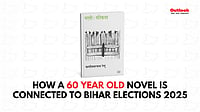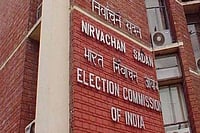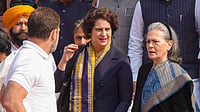This is a three-volume autobiography revised and updated, comprising Punjabi Century (1857 to 1947), Beyond Punjab (1937 to 1960) and Return to Punjab (1961 to 1987). It is the seven-year period that Tandon has now added to the last book that has brought this engrossing saga nearer to our times. That leaves Tandon with yet another 13 years to capture for a literary work that unfolds like cinema reels, characters upon characters, events and images from the ordinary to the extraordinary, of the men, women and happenings of our times. If there is a vivid description of a Punjabi wedding ritual or the ubiquitous syaapa (mourning) at one point, there is a pointed recollection of an exchange of views with his corporate colleagues or a British boss that at once captures the mood, intent and the significance of the exchange, apart from the ability that Tandon has to paint a portrait with a minimum of strokes. If one were to quote a passage to illustrate this point, one would quote the entire book, for the passages are everywhere, teeming with characters that tell a story, in fact, ready material for more films than one.
One can understand how the drama of an evolving society can capture the imagination. The period before India's partition and after is combustible material. But Tandon chooses to encapsulate the changing pattern not through the usual post-partition ferment of war, elections and politics, but through what one would imagine to be a dry area—corporate business and the emergence of a new equation between the newly independent Indians and their old masters.
Tandon's field is management. It has never been anything else. He became a legendary figure as the first Indian to become chairman of Hindustan Lever and became in his own right the symbol of new India. In the latter part of the trilogy, it is his own equation with, and the reaction of his British bosses, which captures the subtleties of the new relationship, his with the British and Britain's with the emerging Indian political hierarchy. This new India also beckoned him to later join the State Trading Corporation, where he gets his first-hand experience of the new political hierarchy.
The last chapter has Tandon, as chairman of the Punjab National Bank, "back in the Punjab of the '20s... Time here must have stood still." Finally, he says, "As this book begins with Punjab, so would I like to end with it. Looking ahead I can only see a promising scenario, of a Punjab together once again, a Punjab of the Mauryas and Ranjit Singh, not in the political sense but as a community... Punjab, Jammu and Kashmir to me are parts of this togetherness historically, whether under the Hindus and Dogras, Muslims, Sikh or the British. And they will be together again." Here, I think, the idealist in Prakash Tandon takes over from the realist.


























